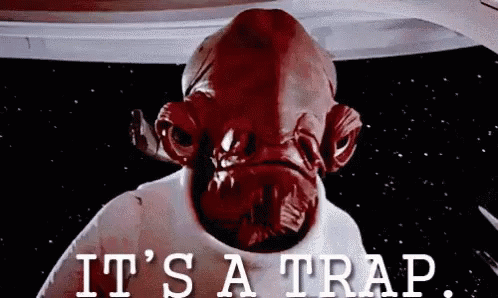Defining trust and the concept of a “trustless” community.
If you’re Merriam-Webster, trust is “assured reliance on character, ability, strength, or truth of someone or something.” If you like to keep things simple (like me), trust is a confident belief in the integrity of a person, thing, or, in this case, technology.
One of the founding principles of Web3 is decentralization, which is heavily dependent on transparency, distributed ownership, and, you guessed it, trust. Trust that the decentralized ledgers will maintain transactional and technical integrity.
Cryptography is the study and practice of sending secure, encrypted messages between two or more parties. Cryptography allows digital currency transactions to be pseudonymous, secure, and “trustless” — with no bank or other intermediary required. — Coinbase
The notion that everything in the blockchain ecosystem is trustworthy is attributed to the underlying security protocol: cryptography. Technology that utilizes cryptography is, in theory, considered more trustworthy than traditional technologies because it leverages mathematics to encrypt and decrypt transactions between two parties. Thus, there is no centralized entity facilitating the transaction, which eliminates the need for one to instill trust in a third-party authority. Do you trust math more than an organization or a person? I sure do. Why? Because math is either verifiable or it isn’t — there’s no subjectivity.
In the same vein, the term “trustless” is omnipresent throughout the Web3 community. “Trustless” in the Web3 community does not refer to the absence of trust. Rather, “trustless” in this context is the idea that one does not need to place their trust in third parties to transact among peers or to participate in a marketplace.
But how “trustless” is Web3 in practice?
Well, I can’t claim Web3 to be 100% trustless (especially given recent events), but I can direct your attention to one common factor attributed to trust breaches: people. Although Web3 sought to eradicate the “people” factor with blockchain technology (and cryptography protocols), the harsh reality is that trust is at risk whenever people are involved in building or managing an asset or technology.
People built decentralized blockchain technologies to eliminate the “people problems,” but people are essential in building and sustaining trust in just about everything, including blockchains.

A tangible comparison between Decentralized Finance (“DeFi”) vs. Centralized Finance
Let’s dive deeper and compare the principles of decentralized finance to those of centralized financial entities such as Bank of America, JP Morgan Chase, Goldman Sachs, etc. The visibility that blockchain users have into the various transactions on a blockchain is equivalent to a Bank of America customer having insight into all of the transactions into, out of, and between all of the bank accounts at a bank. Though we might trust Jamie Dimon, Brian Moynihan, David Solomon, and their auditors, how do bank customers (or blockchain participants in the case of Web3) truly trust these institutions and their supporting technology? A benefit of blockchain technology, especially public blockchains, is that any curious entities can query the details or transactions on a blockchain using block explorer tools. Pretty powerful, eh?
So, what’s the fuss? Doesn’t this insight fundamentally instill trust in blockchain users and the Web3 community as a whole? Well, that’s person dependent.
Trust Skeptics vs. Trust Advocates
This isn’t just a Web3 phenomenon.
Similar to users of traditional technologies (like Google, iCloud, etc.), there are two types of Web3 users: trust advocates who lead with trust and trust skeptics who lead with doubt. The early adopters of Web3 and early adopters of any new technology across the board (from electric cars to smartphones), lean more towards the trust-advocate persona than the trust-skeptic persona. Trust skeptics lead with disbelief and are change-resistant, whereas trust advocates are typically risk-takers who are using their newfound knowledge to show off the newest gadget, flaunt promised financial upside, or showcase that they’re the ultimate trendsetter.

This happened with Web2, too.
Like Web2, the trust skeptics have a loud and bearish outlook on Web3. “It’s not safe,” “it’s a fad,” “it’s a scam.” We’ve heard it all before. If you’re reading this, there’s a decent chance you also believe Web3 is the next technical revolution and internet evolution. The skepticism is nothing new.

The prevalence of distrust means that we need to build trust.
The bad actors have played in favor of trust skeptics.
To be honest, I don’t blame the trust skeptics. Let’s look at recent events such as Celsius’s insolvency, Terra’s depegging, the Slope wallet exploit, sanctions against Tornado Cash, and FTX misappropriating customer funds. We can see that Web3 seems to be losing the trust battle on all fronts.
Our trust is being exploited. And traditional media outlets (such as CNBC) are loving it.
The only way for Web3 builders and enthusiasts to increase the adoption rate of this transformational technology is to build trustworthy products. And products that can objectively measure trust.
Trustworthy products can be analyzed from three facets (and the consultant in me is cringing as I write this framework): people, process, and technology.
Do you trust the people behind the product? Have they seen success in their past endeavors? Would you trust them with your significant other? Maybe the last question is a bit extreme, but you get the point: you need to trust the creators and management teams of these products and tools.
What are the underlying processes? Are the processes supporting the technology air-tight? What’s the uptime of the product or service? Does it seem like the best practices are being followed? Does the company lead with transparency (albeit without divulging its intellectual property)?
Lastly, what about the technology or product? Is it ethical? Is it contributing to the betterment of society? Is it saving people time? Is it helping its customers navigate life more efficiently? Is it giving us time back, or is it simply like most of the other applications or tools that are competing for our attention? It’s important to analyze the overall mission of the technology and its solution offering.
As with any new technology, product, or service, it’s critical to ask yourself these evaluative questions before investing time, money, or effort (or all three). So, where do we go from here?
The trustworthy creators and management teams are fighting an uphill but winnable battle.
For the trust skeptics, trust can be (and often is) built on one handshake, one transaction, or one interaction at a time. Think about the first time you used a mobile banking app: were you like my father and wouldn’t use it if your life depended on it, only to fully trust mobile banking a mere three years later? Simply put, his trust in the security of mobile banking grew because his 401k or identity was never compromised.

As I look back on my father’s slow adoption of Web2 as a whole, it is clear that he gained trust a mere one transaction (or virtual handshake) at a time, even though it seemingly took forever. If my father, a self-proclaimed trust-skeptic, can shift from writing checks to sending wires from his iPhone, Web3 creators can also build (and, more importantly, maintain) a trustworthy ecosystem by leveraging the right people, processes, and technologies. And this is done incrementally, one handshake at a time.
Each time a customer interacts with a brand or product (whether through an advertisement or the product itself) is an opportunity to instill trust not only in your product but also in the entire Web3 ecosystem. And this is true for trust skeptics and trust advocates alike.
So, to all the Web3 builders out there: fortify your integrity, lead with trustworthiness, and do what’s right for your customers and the community. And don’t forget to smile along the way.
Let’s do this together — one handshake at a time.
